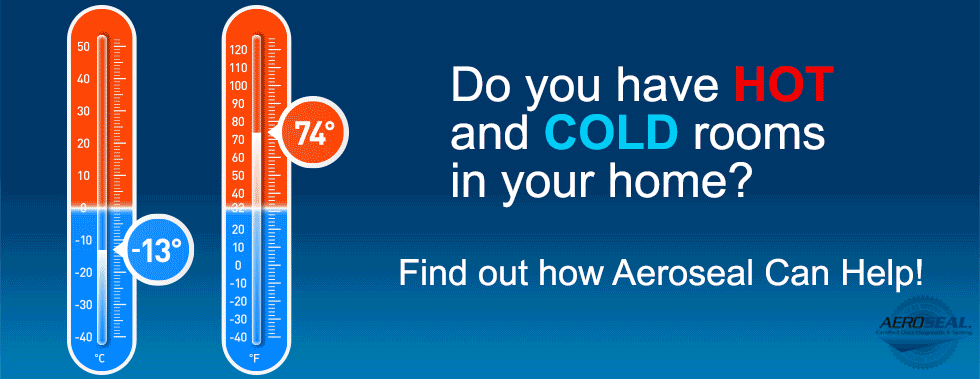
AEROSEAL Air Duct Sealing
Air ducts can be one of the biggest wasters of energy in the average home or commercial building.
AEROSEAL can reduce duct leakage by up to 90%, and reduce your energy use by up to 30%.
The average home in America is wasting 20-30% of the conditioned air that is intended for the living space.
THE SOLUTION?

Airtight Savings
The money formerly leaking out of your ducts will stay in your pocket longer.
AirTight Comfort
Your hard to heat or cool rooms will have more even temperatures and be more comfortable.
Air Quality
You will see a reduction in dust and humidity, along with fumes and other odors.
Technology
Seals leaks nearly impossible to reach using other methods.
You're investing in a greener, more efficient environment by reducing the amount of energy that is being wasted through your ductwork! By sealing your leaky ducts you will be generating less energy in your home and/or office, thereby lowering pollution and consuming less energy.
YOU ARE PART OF A BIGGER SOLUTION

RESIDENTIAL



1.
First, we perform an initial inspection and duct system leakage test to determine the levels of leakage in your home.
2.
Next, we will assess your leakage amount, discuss pricing and implement an action plan.
3.
After your initial home inspection by our Aeroseal professionals, the next step is to schedule the Aeroseal procedure with our office personnel.
4.
The Aeroseal procedure includes: cleaning of the duct work, pre-testing the ductwork to determine the amount of leakage before sealing, followed by the actual sealing process.
5.
The final step is our post-seal test to determine the final results of the seal.




COMMERCIAL
Aeroseal Southeast is striving to be your partner in making your commercial property as energy efficient and inexpensive as possible. Leaking duct systems lead to a huge waste of energy in commercial buildings. The Aeroseal system will bring your duct system to a level of efficiency that is often better than when newly constructed. Efficiencies of 97-99% are typically achieved.
Our goal is to partner with you in an effort to give you the information you need to make sound financial decisions about your property. Our process of inspection and reporting will give you valuable information regarding your HVAC ducting along with an estimate of the money you are wasting every year.
1.
We will schedule an initial meeting to determine more about the property and to secure a set of mechanical plans for the HVAC systems.
2.
We will perform a thorough study of the mechanical plans to formulate a plan of inspection and duct tightness testing.
3.
We will conduct a site visit in which duct leakage testing is performed. This visit also includes an internal inspection of the duct work.
4.
We will make a determination of the amount of energy being wasted by the duct systems will be made using ASHRAE standards of energy efficiency for commercial buildings.
5.
The final step is to calculate the cost of sealing the duct systems in your building and discussing the options available for sealing the duct systems.

Leaking Ducts are Costing You Money!
Increased Energy Consumption – With fan power representing 40-50% of HVAC energy usage, leakage costs can be significant due to increased in fan speed to compensate for leakage; even 15% leakage can lead to an increase in system fan power of 40%
Thermal Loss – When supply air escapes, variations in temperature between rooms and floors occur affecting comfort levels in this space
Equipment Overload – Your system will run longer than specified to compensate for pressure loss and temperature accuracy; this could lead to increased maintenance costs and premature component replacement
Code Issues – Leakage could lead to ventilation and safety code issues relating to exhaust, along with excessive fan power use
Airflow safety – For hospitals, laboratories and manufacturing facilities, the unexpected spread of contaminant and biohazards through back drafting could pose a liability
